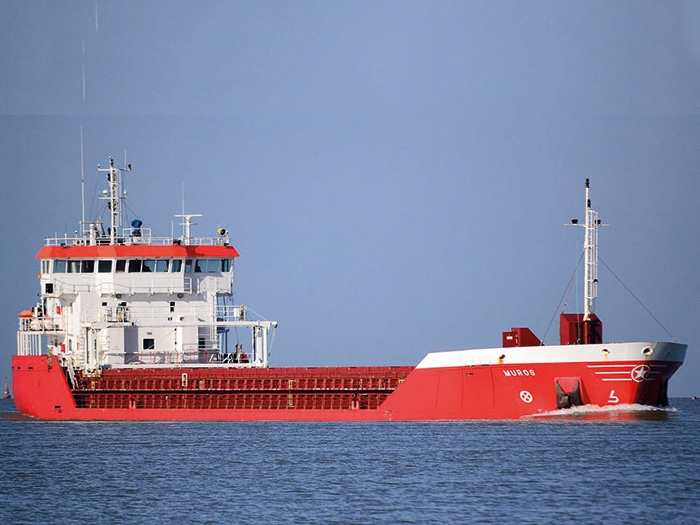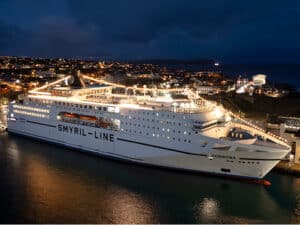
MAIB report on grounding raises worrying questions about ECDIS
Written by Nick Blenkey
Muros
OCTOBER 20, 2017 — A U.K. Marine Accident Investigation Branch (MAIB) report into the December 3 2016 grounding of the 4,950 dwt Spanish-flag bulker Muros off the U.K. east coast is raising more questions about first generation ECDIS systems and the way they are being used.
It follows several previous similar groundings investigated by the MAIB between 2008 and 2013 in which the way ECDIS was used was also found to be contributory to varying degrees. Common themes identified included the disablement of the audible alarm, making the “guard zone” inactive, not using automatic functions to check passage plans, using inappropriate chart scales and safety contours, and insufficient operator knowledge and training.
Following is taken from the MAIB summary of its findings in the Muros incident:
At 0248 (UTC+1) on December 3 2016, the bulk carrier Muros ran aground on Haisborough Sand on the east coast of the United Kingdom. Attempts to maneuver clear of the shallows were unsuccessful but the vessel was re-floated 6 days later with tug assistance.
There were no injuries and no pollution, but damage to Muros’s rudder necessitated the vessel being towed to Rotterdam, Netherlands, for repair.
The MAIB investigation identified, inter alia:
- The vessel was following a planned track across Haisborough Sand. The passage plan in the ECDIS had been revised by the second officer less than 3 hours before the grounding and it had not been seen or approved by the master.
- A visual check of the track in the ECDIS using a small-scale chart did not identify it to be unsafe, and warnings of the dangers over Haisborough Sand that were automatically generated by the system’s “check route” function were ignored.
- The second officer monitored the vessel’s position using the ECDIS but did not take any action when the vessel crossed the 10 m safety contour into shallow water.
- The effectiveness of the second officer’s performance was impacted upon by the time of day and a very low level of arousal and she might have fallen asleep periodically.
- The disablement of the ECDIS alarms removed the system’s barriers that could have alerted the second officer to the danger in time for successful avoiding action to be taken.
The MAIB has recently investigated several grounding incidents in which the way the vessels’ ECDIS was configured and utilized was contributory. There is increasing evidence to suggest that first generation ECDIS systems were designed primarily to comply with the performance standards required by the IMO, as these systems became a mandatory requirement on ships, with insufficient attention being given to the needs of the end user. As a consequence, ECDIS systems are often not intuitive to use and lack the functionality needed to accommodate accurate passage planning in confined waters. This situation has led to seafarers using ECDIS in ways which are at variance with the instructions and guidance provided by the manufacturers and/or expected by regulators.
The MAIB is conducting a safety study, in collaboration with the Danish Maritime Accident Investigation Board, designed to more fully understand why operators are not using ECDIS as envisaged by regulators and the system manufacturers. The overarching objective is to provide comprehensive data that can be used to improve the functionality of future ECDIS systems by encouraging the greater use of operator experience and human centered design principles.
In view of the actions already taken, no recommendations have been made in this report.
Read the MAIB report HERE





Leave a Reply
You must be logged in to post a comment.